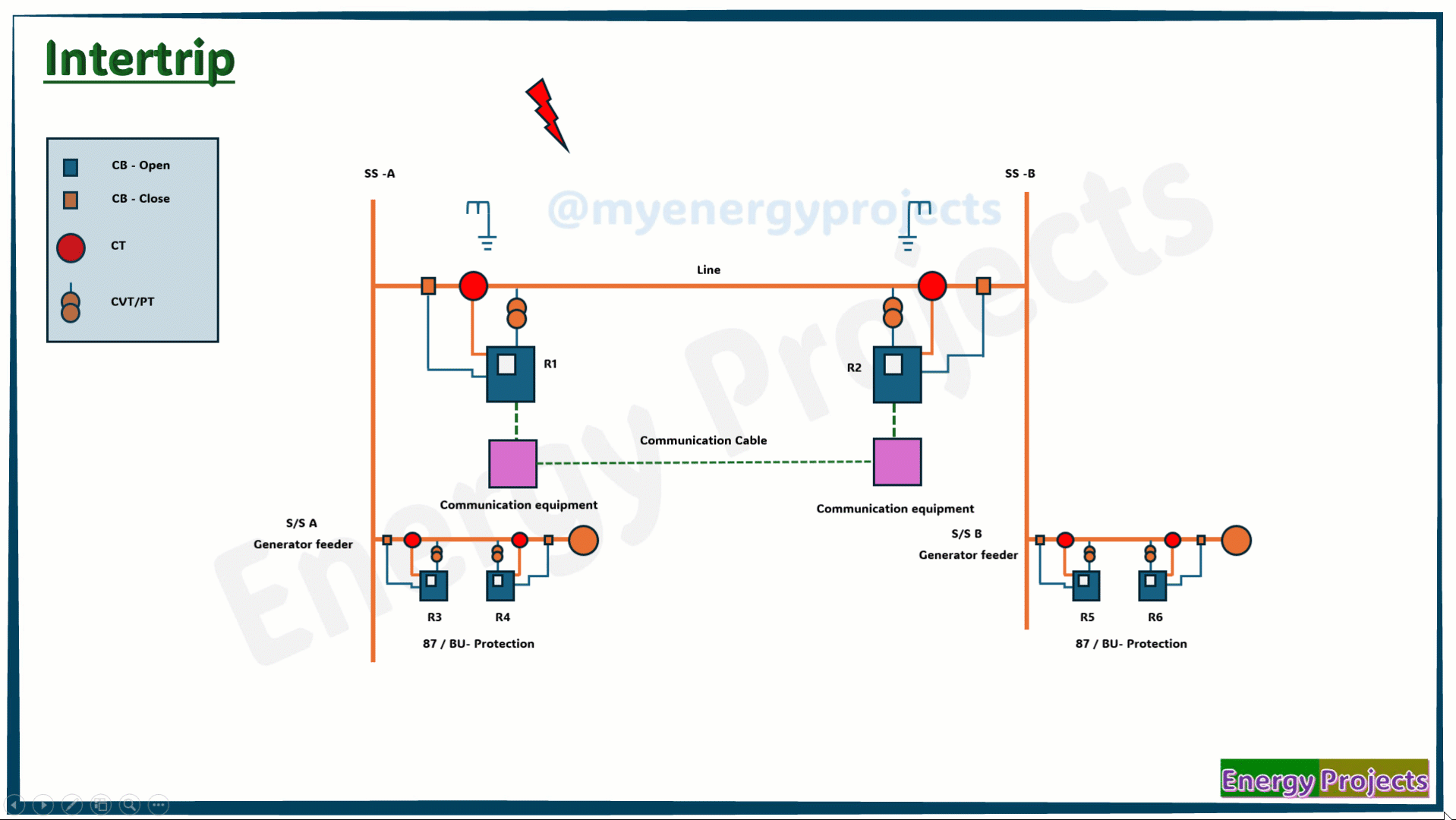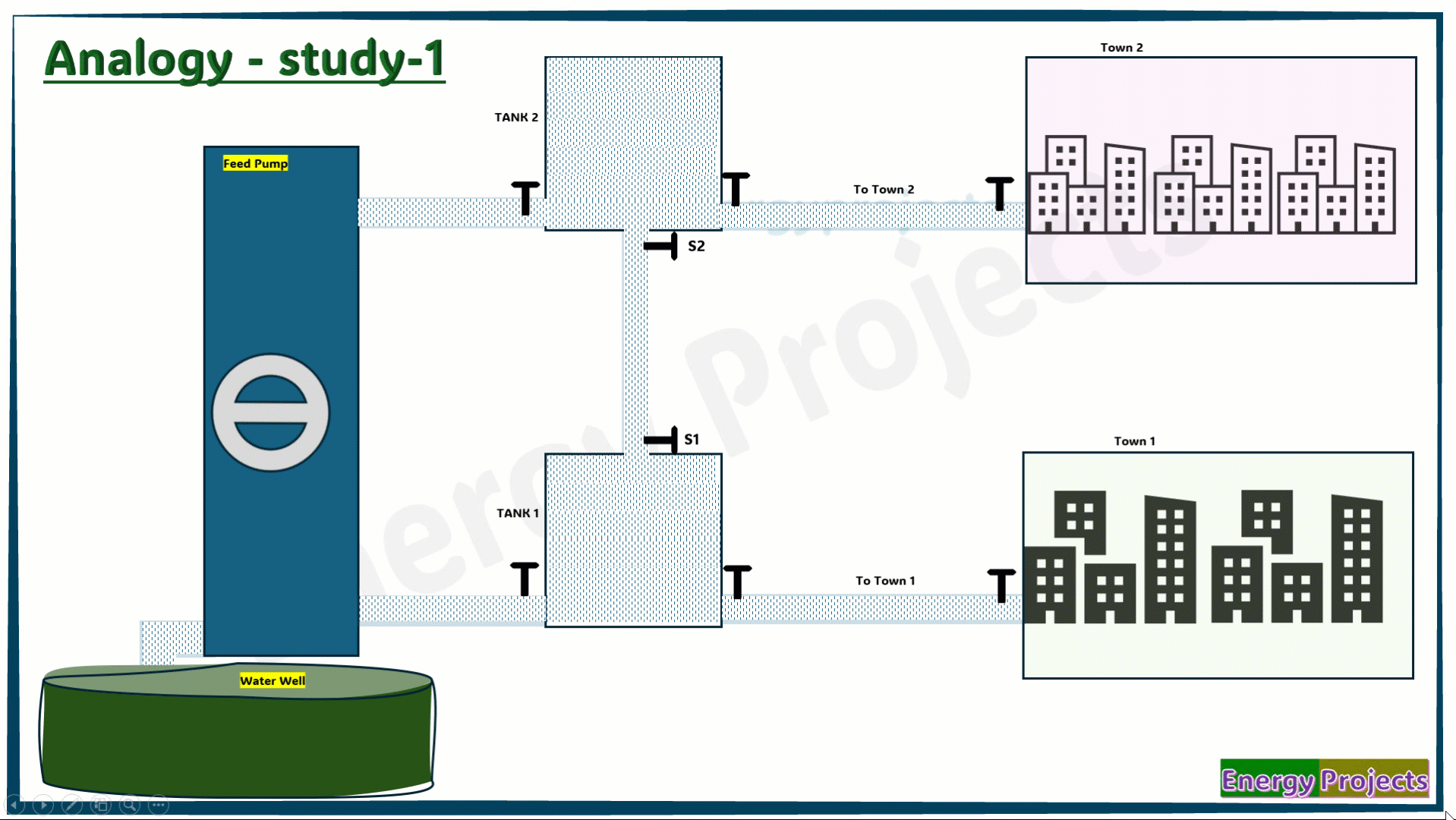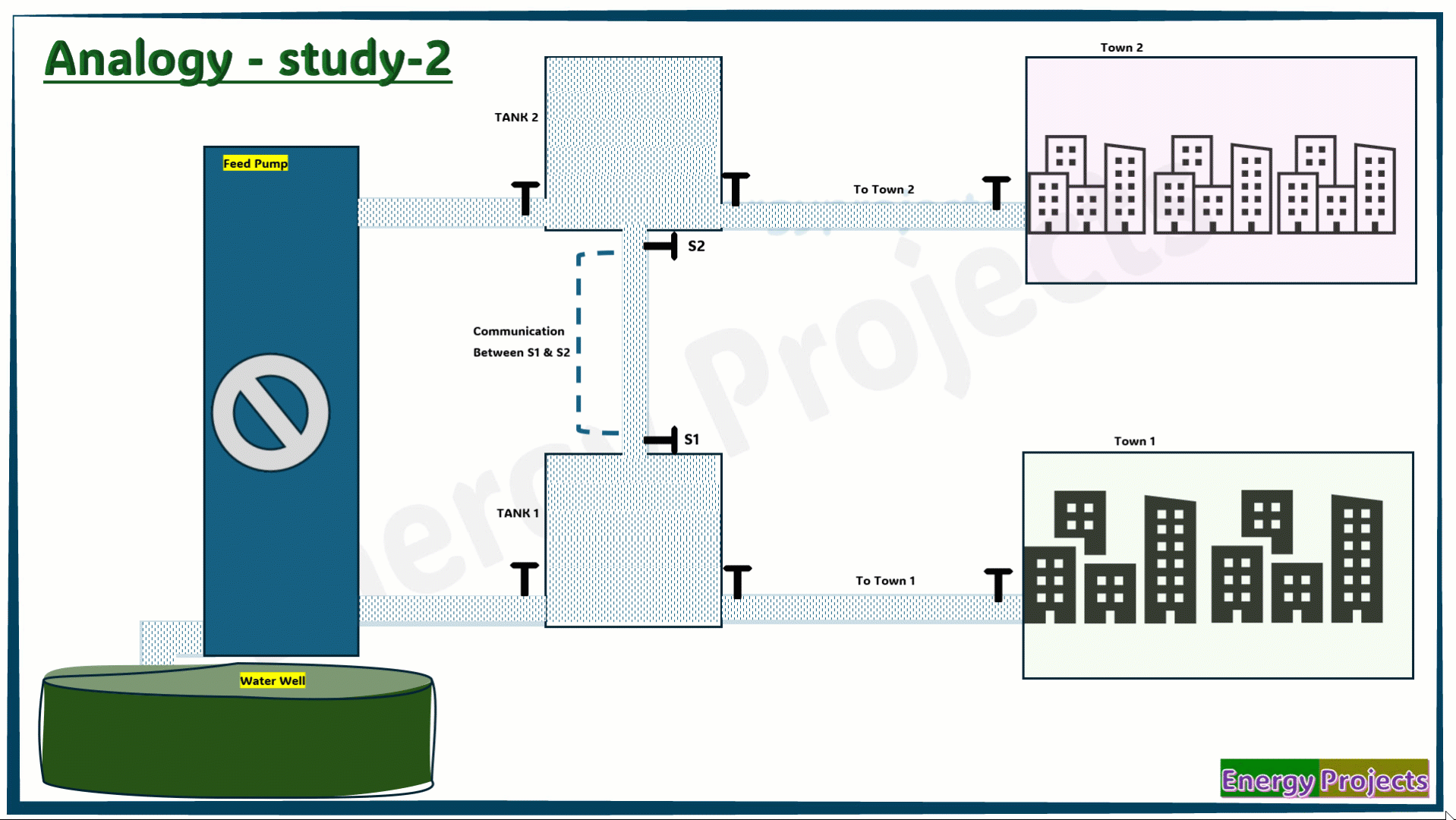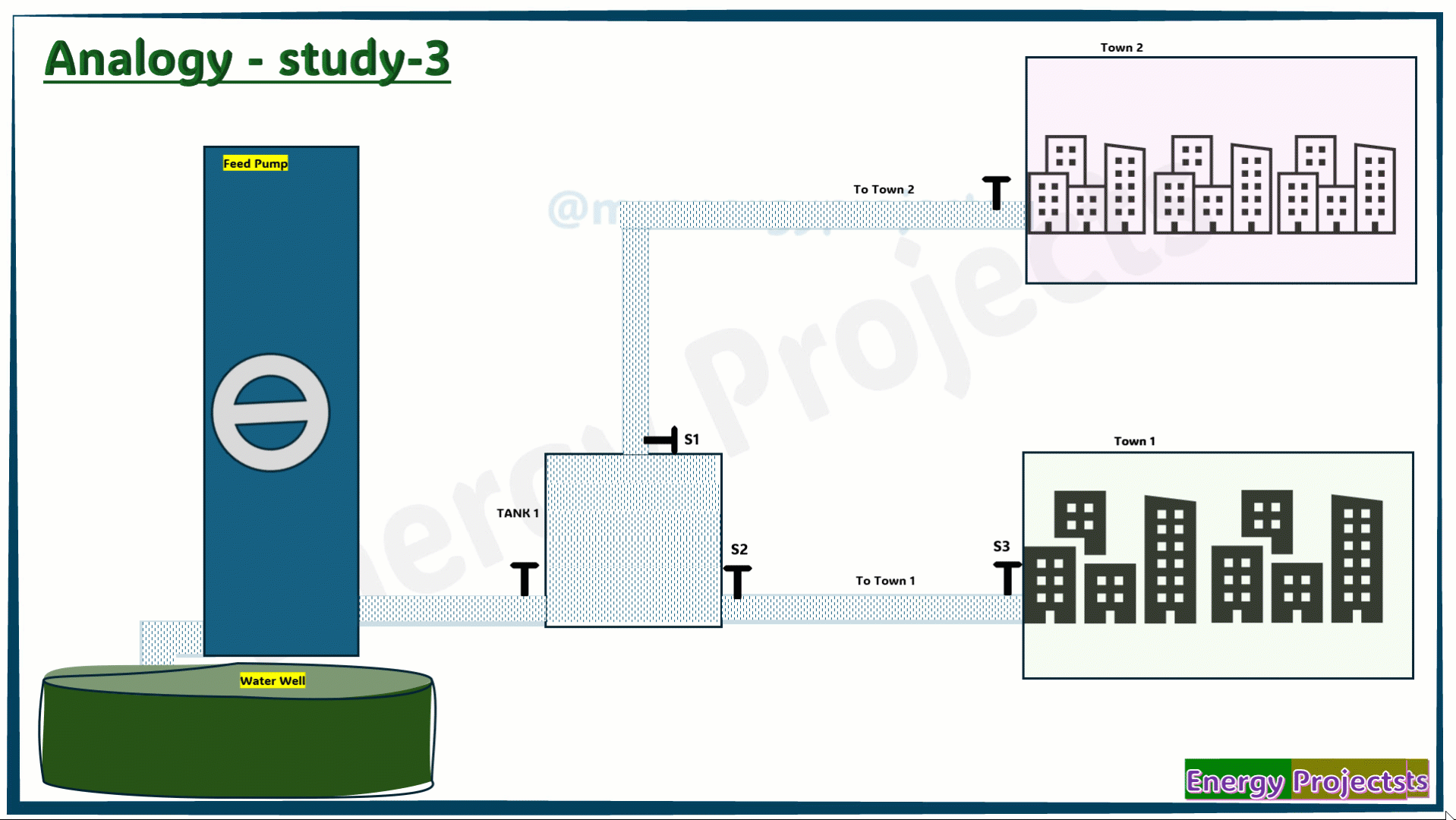07.Intertrip - Page 01
What is Intertrip :
Intertripping is a protective scheme in electrical power systems that enables a circuit breaker at one substation to remotely trip a breaker at another substation. It is commonly used for isolating faults on transmission lines or cables, and for simultaneously tripping both HV and LV breakers in transformer zones. This ensures fast and safe disconnection of the fault from both ends of the system.
Let’s start with a simple setup:
Imagine Substation A and Substation B connected via a line feeder. Both substations are fed by generator feeders that supply power to their respective busbars.
Now, suppose a fault occurs on the line between these substations. The relay closest to the fault (Relay R1) detects as its close to Zone 1 , that issue a trip command to the circuit breaker at Substation A. Simultaneously, R1 sends an intertrip signal to the remote relay (Relay R2) at Substation B, where it will be at Zone 2. Relay R2 then trips the circuit breaker at its end as well, isolating the faulty line from both sides.
This simultaneous tripping action is known as an intertrip.


Single Busbar Configuration
Single Busbar with Bus section Configuration
Single Busbar with Transfer busbar configuration
Single Busbar with Bus section + Transfer bus coupler + Section Isolator configuration
Double Busbar with Bus coupler Configuration
Double Busbar with Bus coupler + Bypass Isolator Configuration
Double Busbar with Bus coupler + Transfer Buscoupler configuration
Mesh Busbar configuration
One and Half Breaker Busbar Configuration
More
Let’s use a water analogy to better understand intertripping:
Case:1
Imagine a feed pump supplying water to two storage tanks, which in turn distribute water to nearby towns. A pipeline connects both tanks.
Now, let’s consider a leak in the pipeline:
If you close only valve S1, water continues leaking due to flow from the second tank.
To stop the leak completely, you must also close valve S2.
However, if S1 and S2 don’t close simultaneously, more water will spill, possibly causing more damage to the pipeline.
This is similar to a power system where delayed tripping from one side allows fault current to continue flowing, increasing the risk of equipment damage.
If both sides trip instantly, damage is minimized just like stopping water flow instantly from both tanks.


Case:2
In Case 2, valves S1 and S2 close simultaneously where there is fault in a pipe, which immediately stops the water flow. Because the leak is isolated without delay, the severity of the pipe damage is significantly reduced.


Case:3
In this case we have one tank which is feeding water to two towns. The pipe is damaged to town. Here we can stop just a S2 is enough. No need to stop S3 as there is no other pipeline is linked to town 1. It's up to us to stop S3 or not.


